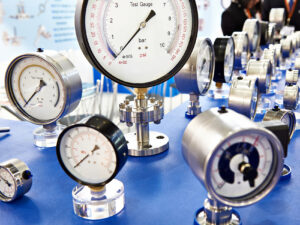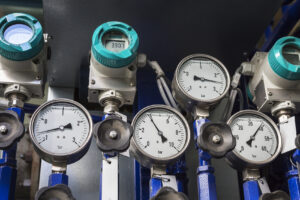A glycerin-filled pressure gauge is a robust and precise instrument commonly used in industrial applications. These gauges are filled with glycerin, a viscous liquid, which serves to dampen vibrations and protect the internal components from damage caused by pressure spikes or external shocks.
Advantages of Glycerin-Filled Pressure Gauges
- Vibration Resistance: The glycerin inside the gauge minimizes needle oscillations, ensuring easy readability in environments with heavy vibrations.
- Extended Lifespan: By lubricating the internal mechanisms, glycerin reduces wear and tear, extending the gauge’s durability.
- Wide Temperature Tolerance: Glycerin prevents condensation on the inside of the lens in humid conditions, maintaining clear visibility.
Applications
These gauges are ideal for:
- Oil and gas pipelines
- Hydraulic systems
- Manufacturing plants
- HVAC systems
- Marine environments
Technical Specifications
Below is a typical set of specifications for a glycerin-filled pressure gauge:
| Feature | Description |
|---|---|
| Dial Size | 1.5″, 2.5″, 4″, 6″ |
| Case Material | Stainless Steel (304 or 316) |
| Bourdon Tube | Phosphor Bronze or 316SS |
| Lens | Glass or Acrylic |
| Connection Type | NPT, BSP |
| Accuracy | ±1% of full scale |
| Filling Material | Glycerin |
| Operating Pressure | Up to 60 bar |
| Temperature Range | -20°C to 60°C |
Why Choose Glycerin-Filled Gauges?
- Durability: The filling protects against mechanical shocks.
- Versatility: Suitable for both static and dynamic pressure measurement.
- High Performance: Ensures consistent operation in challenging environments.
Glycerin-filled pressure gauges are an essential tool for ensuring safe and accurate pressure readings in harsh conditions. Their reliability and cost-effectiveness make them a popular choice across industries.



